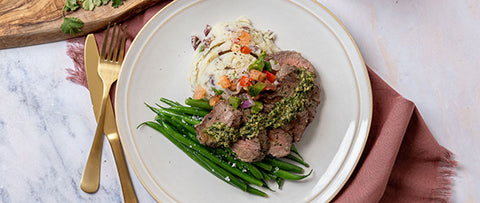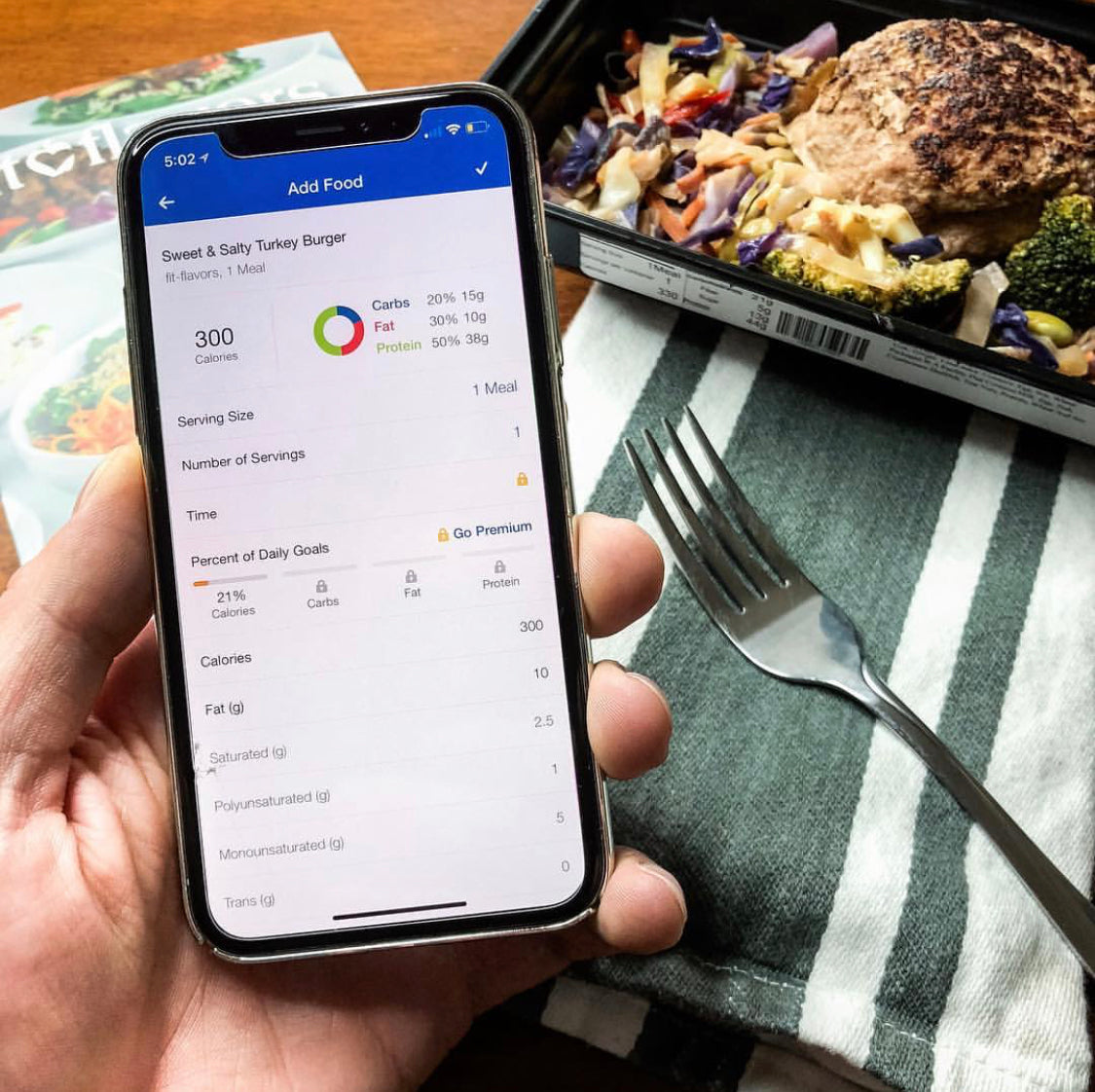Did you know that 88% of people who track their intake on applications such as MyFitnessPal for (just) 7 days lose weight?
That statistic alone should be enough to convince you that if you’re not reaching your nutrition goals, you may want to try tracking what you eat. Regardless of if you want to lose weight, tone up, or just get healthy, tracking your food provides priceless insight into your starting point, areas for improvement, and ensuring progress over time.
In this article, we’ll discuss the benefits of tracking your food, how to track, and tips for long term success in achieving your health and nutrition goals.
8 Benefits of Tracking Your Food
- Increases mindfulness. Can you remember what you ate for dinner last night? Often times we forget everything we put in our mouths. Tracking helps you remain mindful of what you eat because you have to log it.
- Provides you a better understanding of your current eating habits. In order to reach your nutrition goals, you need to know what your starting point is so you can make an attainable plan with steps to reach your goal. For instance, you need to know how many calories you’re currently consuming, from what sources, and what ratio of macronutrients before you can tweak anything to make progress towards your goal.
- Informs you how nutrient dense your food is. Tracking your food helps you determine what foods are “worth it” for you to meet your goals/nutritional needs (after a few days, you may think, “Wow, those donuts from the breakroom are really difficult to fit into my nutrition plan and they aren’t that satiating. I think I’d rather eat something else.” OR something like, “Cake is my favorite dessert. I know I’m going to have to balance the rest of my day because of it, but I’m ok with that because I don’t eat cake that often and I really love cake, so this is worth it to me.”) Likewise, it helps you realize what foods are inhibiting you from meeting your goals (and therefore help you reduce the amount of consumption or even eliminate). For example, a latte with whole milk and syrups can add an extra 500 calories to your day. If you consume that latte everyday, that’s an extra 3500 calories each week...that’s equal to 1lb of fat...every week.
- Holds you accountable. By logging, you are aware when you near your daily calorie limit.
- Helps you balance your total calories and macronutrients throughout the day. By logging each meal, you can see how balanced your meals are and this can help you make better choices in the future or ensure you continue to make balanced choices for sustained energy.
- Helps you reach your goals. Once you know the caloric density of your food, you can’t help but use that information for the future to help you reach your goals. For example, while out to eat at The Cheesecake Factory you are debating what appetizer you want to order. Before making a decision, you check to see how many calories are in the Grilled Chicken Lettuce Wraps and discover that they contain a whopping 1000 calories. You also notice that would put you way over your calorie limit for the day and decide to go with a different appetizer. (Side note: this is different than a restrictive, boring diet. Tracking simply allows you to make informed decisions of foods you enjoy)
- Gives you options. You can feel empowered that you have control over incorporating a variety of your favorite foods, in moderation, into your diet.
- Allows you to plan ahead. Decide what you’re going to get at the grocery store while at home or pre-read the menu and log those foods in advance. If you aren’t able to do this, learn after you make a choice why it was good or bad (moving your towards or away from your goal) and how to improve your choice in the future.
How to Track Your Food
We’ve found that many people find success tracking their food using the free app, MyFitnessPal (MFP). For specifics on how to use My Fitness Pal, check out their how-to guide.
People have seen great success with MFP specifically because it has nearly every food in the database, you can easily scan barcodes (including fit-flavors barcodes), you can save your own personal recipes or favorite meals, and the app is available for iOS and android--you always have your phone on you, so you won’t have an excuse not to track something.
Activity: Try to log what you ate yesterday. The first step in tracking your food and utilizing MFP is really just seeing what you are currently consuming on an average day. Then, once you know your starting point and have determined your goal, you can tweak what you consume (based on your own food preferences and goals) to fit your nutrition needs.
A few things to remember when you start tracking:
- The more often you track, the more likely you are to reach your goals. Tracking keeps you informed about your intake over time. Tracking gets easier the more you do it. There’s a learning curve to this stuff. Be patient and overtime you won’t even realize that you're making tracking a habit that takes little to no time out of your day.
- Track something v. nothing at all. Often times we get caught up in picking the correct item to log but just having discipline, staying mindful, and holding yourself accountable to logging is just as beneficial in helping us reach our goals.
- Lifestyle habits will form by logging each meal, one at a time. As you get more organized with doing this, logging your day ahead of time will force you to have a plan.
- Log ahead of time to see if that food aligns with your goals. If it does not, delete it and choose something else.
Tips for Lasting Lifestyle Changes
- Set custom reminders. If you’re prone to skipping meals and snacks because you get busy at work and forget to eat, you can set custom reminders in MFP to help you remember when to eat. You can also set a reminder to log your food.
- Make friends. People who add friends on MFP are twice as likely to lose weight as those who don’t. Adding friends is a great way to hold yourself accountable, give support to each other, and motivate each other to continue logging.
- Save time with short cuts. Save multiple logged items to make a meal (i.e. a salad or something with many components), utilize the barcode scanner for quick entries, and add recipes from the web or your own. The last one is also helpful for seeing what your favorite homemade recipes really consist of. You can create a meal in MFP and alter the ingredients or portions until it fits what you need for your goals.
- Log at restaurants. Most places have their nutrition up on their website and are already on MFP database. Another good tip is to log your food before you order it to see if it fits in your day. That way you can change what you order if what you originally planned on getting doesn’t fit.
- Connect with other apps you use. Connect with your other favorite health and fitness apps such as MapMyRun, Fitbit, and Garmin, so you have all your health data in one, easy to reference place to see your full progress in every area.
- At the end of the day, tap “Complete Diary.” This tells MFP that you’re done eating for the day and MFP will give you feedback on how the choices you made during the day impacted your progress toward your goals.
- Reflect on non-scale victories. Not every victory is going to happen on the scale -- in fact, most won’t. These small victories could include: eating all your meals and snacks every day for a month (if you’re someone who forgets to eat), staying within your calorie range each day, having balanced meals at the right times each day for a week, having lower cholesterol at the doctor, passing on the donuts in the breakroom, etc. Block out time to reflect on how your healthy habits are having a positive impact on your life. This will help you continue to make healthy choices in the future.
What now? My challenge to you is to track your food for 7 days. It might feel uncomfortable, but I promise it will get easier the more you do it.





